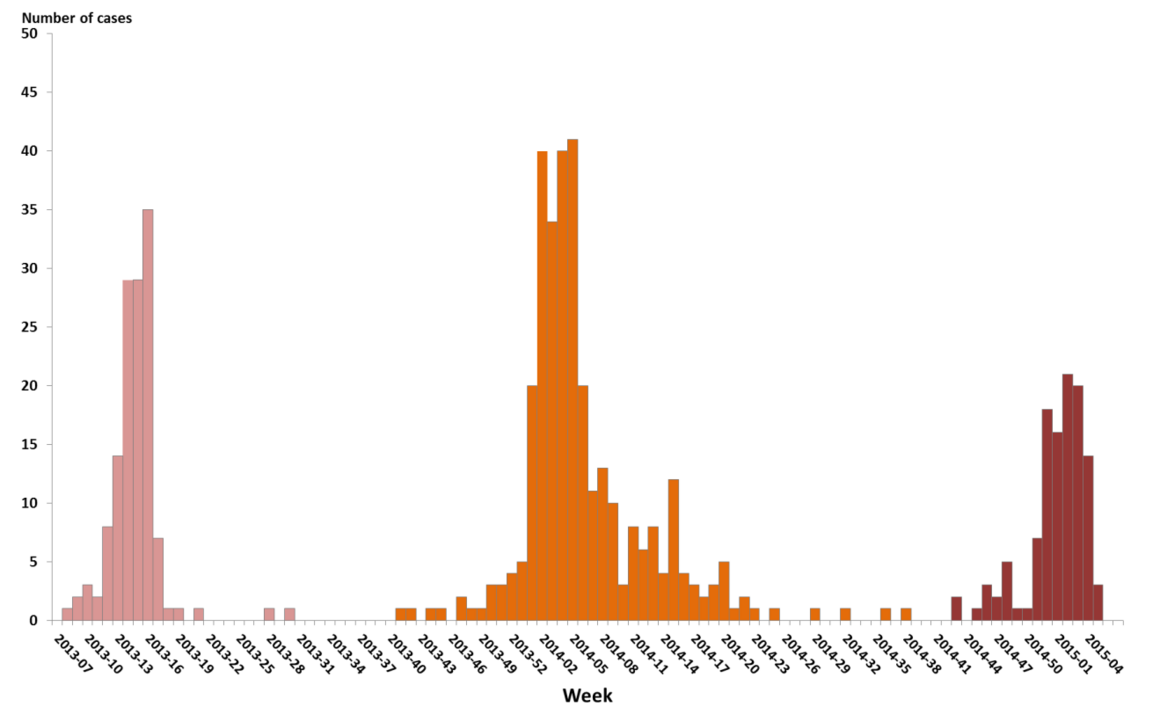Epidemiological update: Human infection with avian influenza A(H7N9) virus, China
On 4 February 2015, the National Health and Family Planning Commission (NHFPC) of China notified WHO of 83 additional laboratory-confirmed cases of human infection with avian influenza A(H7N9) virus. Onset dates ranged from 20 December 2014 to 27 January 2015.
On 4 February 2015, the National Health and Family Planning Commission (NHFPC) of China notified WHO of 83 additional laboratory-confirmed cases of human infection with avian influenza A(H7N9) virus. Onset dates ranged from 20 December 2014 to 27 January 2015.
According to WHO these most recently reported cases ranged in age from one to 88 years with a median age of 56 years. Of the 83 cases, 19 were fatal. The majority of the cases 73% (n=60) were among men. All but five cases (78 cases, 93%) reported exposure to live poultry or live poultry markets; the exposure history of four cases is unknown. Three family clusters were reported, each comprised two cases; all had exposure to live poultry or live poultry markets.
Since the first notification, in March 2013, of a novel reassortant A(H7N9) influenza virus in patients in eastern China, and as of 11 February 2015, the Chinese health authorities have reported to WHO 568 laboratory-confirmed cases: Zhejiang (156), Guangdong (142), Jiangsu (70), Fujian (58), Shanghai (45), Hunan (24), Anhui (18), Hong Kong (12), Xinjiang Uygur Zizhiqu (10), Jiangxi (7), Beijing (5), Shandong (5), Guangxi (4), Henan (4), Taiwan (4), Jilin (2), Guizhou (1) and Hebei (1).
Distribution of confirmed A(H7N9) human cases by place of reporting, week 07/2013 to 06/2015, in China (n=568)

The outbreak shows a seasonal pattern with a peak during January-March and sporadic cases during the summer. The first wave in 2013 (week 07/2013 to week 40/2013) included 135 cases, the second wave 319 cases between week 41/2013 and week 40/2014. The third wave started in October 2014 (week 41/2015) and included 114 cases as of 11 February 2015. The peaks of the three waves occurred during the cold season in China, with only a few cases during the summer months.
Distribution of confirmed A(H7N9) cases by week*, week 07/2013 to 06/2015, China

Sources for the data: WHO Disease Outbreak News *WHO data shows cases by the week of onset (n=568)
Overall, 204 of the 568 cases notified in China have died (case-fatality ratio (CFR) = 36%). In the first wave period, 43 of 135 cases died (CFR 32%) and in the second wave 134 of 319 cases died (CFR 42%). During the third wave, 27 of the 114 cases have died (24%). These estimates are based on the information available at the time of notification. Therefore, CFR may be affected by completeness of information about outcome at time of notification.
Cases are being notified by the local Chinese health authorities. One of the recent cases was reportedly the first autochthonous case in Guizhou Province, in Guiyang city. The case had exposure to poultry and onset of symptoms was on 5 February 2015; the case was hospitalised on 8 February. However, according to the Chinese Ministry of Agriculture no positive samples [in Chinese] have been found in poultry or in the environment in the vicinity of this case. This has not yet been acknowledged by WHO.







